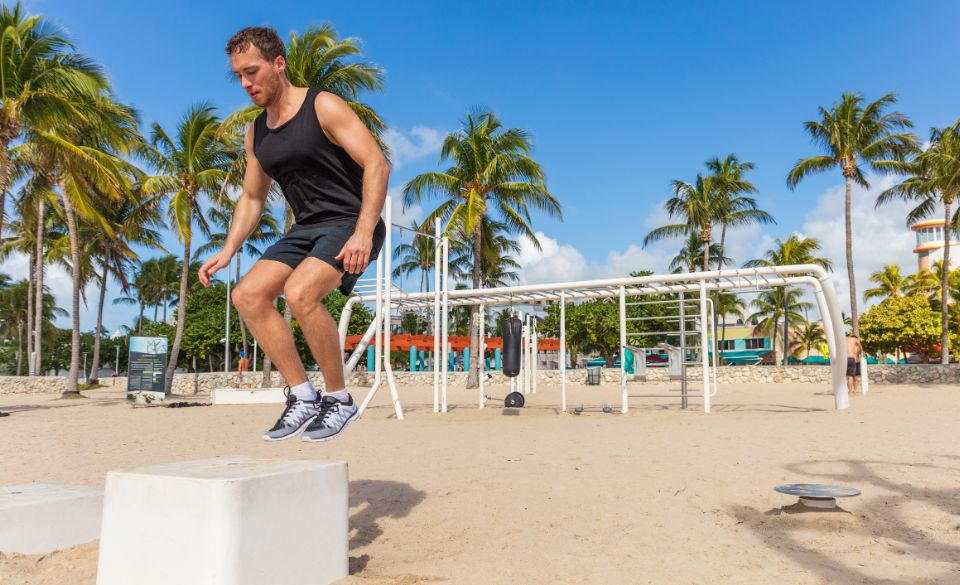
What is the Best Exercise to Increase Jump?
Page Contents
If you’re looking to improve your vertical jump, you’re not alone. Many athletes, especially those involved in sports like basketball and volleyball, seek ways to enhance their jumping ability. A higher jump can give you a competitive edge and open up new possibilities in your game. So, what is the best exercise to increase your jump? Let’s explore some popular exercises and delve into the studies that support their effectiveness.
Squats: Building Power from the Ground Up
One exercise that often comes to mind when discussing vertical jump improvement is squats. Squats are a compound movement that targets multiple muscle groups simultaneously, including the quadriceps, hamstrings, glutes, and calves. By regularly incorporating squats into your training routine, you can develop lower body strength and power, which are crucial for generating explosive force during a jump.
Several studies have demonstrated the positive impact of squats on vertical jump performance. For instance, a study published in the Journal of Strength and Conditioning Research found that athletes who performed squats as part of their training program experienced significant improvements in their vertical jump height compared to those who didn’t include squats. Another study published in the Journal of Sports Sciences showed that squat training increased jump performance and power output.
Plyometric Exercises: Unleashing Explosive Power
Plyometric exercises are another valuable tool for increasing your jump height. These exercises involve rapid and explosive movements that help develop the stretch-shortening cycle of the muscles, which is crucial for generating maximum force during a jump. Examples of plyometric exercises include box jumps, depth jumps, and bounding exercises.
Research supports the effectiveness of plyometric training for improving vertical jump performance. A study published in the Journal of Strength and Conditioning Research investigated the impact of plyometric training on collegiate basketball players. The results revealed that the athletes who participated in the plyometric training program experienced significant increases in their vertical jump height compared to those in the control group.
Olympic Weightlifting: Enhancing Power and Explosiveness
Olympic weightlifting exercises, such as the clean and jerk and the snatch, are renowned for developing explosive power and strength. These exercises require a combination of strength, speed, coordination, and flexibility, making them highly effective for improving athletic performance, including vertical jump height.
Research has shown that Olympic weightlifting exercises can lead to significant improvements in vertical jump performance. A study published in the Journal of Strength and Conditioning Research examined the effects of Olympic weightlifting on jump height in male and female volleyball players. The findings demonstrated that athletes who incorporated Olympic weightlifting exercises into their training routine experienced greater gains in vertical jump height compared to those who followed a traditional training program.
Resistance Training: Strengthening the Muscles
In addition to the aforementioned exercises, incorporating resistance training into your workout routine can also contribute to improving your vertical jump. Resistance training involves using external resistance, such as weights or resistance bands, to increase the intensity of your exercises and challenge your muscles further. Exercises like lunges, step-ups, and calf raises can be effective for targeting specific muscle groups involved in jumping.
Studies have shown the positive impact of resistance training on vertical jump performance. A research article published in the Journal of Sports Science & Medicine examined the effects of a resistance training program on vertical jump height in young male athletes. The results demonstrated that the athletes who underwent resistance training experienced significant increases in their vertical jump height compared to the control group.
Final Words
In conclusion, improving your vertical jump requires a multifaceted approach that targets the muscles involved in jumping and enhances power, explosiveness, and strength. Squats, plyometric exercises, Olympic weightlifting, and resistance training all offer valuable benefits when it comes to increasing jump height. By incorporating a variety of these exercises into your training routine and staying consistent, you can enhance your vertical jump and elevate your performance on the court or field. Remember, it’s important to consult with a qualified trainer or coach to ensure proper form and technique when performing these exercises.
While the exercises mentioned above have been supported by studies and shown to be effective, it’s worth noting that individual results may vary. Factors such as genetics, overall fitness level, and training consistency can influence your progress. Therefore, it’s essential to approach your training with patience and dedication, understanding that improvements in your vertical jump may take time.
In addition to specific exercises, it’s crucial to maintain a well-rounded training program that includes proper warm-up and cooldown routines, flexibility exercises, and overall strength and conditioning work. Building a solid foundation of strength and fitness throughout your entire body can contribute to improved performance in various aspects, including your vertical jump.
Lastly, it’s important to listen to your body and avoid overtraining. Giving yourself adequate rest and recovery time is crucial for muscle growth and injury prevention. Pushing yourself too hard without allowing for proper rest can lead to burnout and hinder your progress. Incorporate rest days into your training schedule and focus on quality sleep and nutrition to support your body’s recovery process.
In conclusion, the best exercise to increase your jump involves a combination of different training modalities, including squats, plyometric exercises, Olympic weightlifting, and resistance training. These exercises target different muscle groups and aspects of jump performance, such as power, explosiveness, and overall strength. By incorporating a variety of these exercises into your training routine, staying consistent, and ensuring proper form and technique, you can enhance your vertical jump and take your athletic performance to new heights. Remember to consult with a professional trainer or coach for guidance tailored to your specific needs and goals. Keep pushing yourself, but also listen to your body and prioritize rest and recovery for optimal results.



